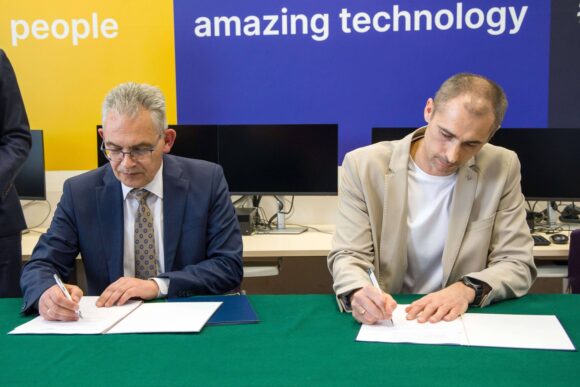
Product Roadmap in Metapack, our path to product development

Do you know the rule that if you don’t see enemies in the game, you are going in the wrong direction? It is similar in a large IT company. If we don’t encounter obstacles, we stop developing.
At Metapack, we focus on continuous evolution (not to be confused with revolution). We are constantly looking for new solutions and we try to implement them gradually, adapting to our specific needs. This is how we came to the methodology of product management and implementation of the product strategy using the Product Roadmap tool. See what it means to us and how we use it every day. No unnecessary definitions or terminology.
A few IT enthusiasts from Zielona Góra …
However, let’s start with a short history of Metapack that will allow you to understand how we operate and why we decided to implement the principles of Product Management.
The company was founded in 2003. At that time, we were creating a software solution for one of the European postal operators. These were the days when the word “e-commerce” was not widely used, and online sales in Europe were just beginning. At that time, when there were several people working in the office and the area of our activities was smaller, the design approach worked perfectly.
This meant that we created teams for a specific project, and each of these projects had specific guidelines, most often dictated by the expectations of our direct clients. We acted according to previously set goals, we were focused on the end result, and we made all specifications or strategic decisions at the very beginning of the project.
… and a revolution on the purchasing market
The dynamic development of online sales has completely changed the shipping and logistics industry. Courier companies and online stores appeared, competing with each other not only in terms of the product range, but also in terms of service and available forms of shipping or after-sales options. This change on the market allowed us to develop our product in completely new directions.
Then it turned out that the design approach is insufficient. The needs of not only our customers but also consumers were growing, and the services of logistics operators implemented in our products became much more diverse than before. It was necessary to meet the expectations of each party. In a rigid design approach, such dynamics of change mainly caused frustration. We realized that we had to be more flexible and around 2010 we reached for the so-called “agile management methods” popular at that time.
From design to product
In the face of dynamic transformations in the shipping and courier industry, the e-commerce market was still redefining expectations towards IT systems and we were fully aware of it. In order to meet these expectations, apart from technological changes, we also decided to change the approach to management and work planning.
The previous design approach with a predefined scope and time of implementation didn’t give teams too much autonomy in deciding how to implement product changes. We started to change that.
The breakthrough year was 2019, when we decided to start implementing a completely new approach. It was then that we moved away from broadly understood project management to product management. From the point of view of engineering teams, still based on agile methodologies.
We decided to look at the possible solutions, their complexity and dependencies, and redefine the product map. Then focus on their integration, consistency from the point of view of the data model ontology, openness to changes and a new approach to planning their development through Product Roadmap .
There is no roadmap without a target
We have many products that make up the Metapack ecosystem, and the growing market expectations mean that the possibilities of their development are unlimited. Today’s product functionalities and continuous software delivery engineering were still in our distant aspirations ten years ago. Therefore, analyzing trends and constantly striving to improve our services is a constant part of the daily work of every Metapacker.
So what is our mission? First of all, connecting the world of buyers with sellers by integrating the services of logistics operators who deliver orders to buyers around the world. Through the Metapack software, we connect online stores with couriers and end consumers to make the entire process of placing and fulfilling orders as comfortable, hassle-free and fast as possible.
With great opportunities comes great responsibility
It sounds easy in theory, but in practice the process of implementing the new methodology is long and multi-stage. We have been using Product Management for about two years, but we believe that we are constantly changing.
What exactly did implementing the Product Approach Principles mean for Metapack? Here are a few changes we had to face:
Reorganization of production teams
In order to enable the teams to approach their tasks more comprehensively, we have created cross-functional (interdisciplinary) development teams, consisting of several types of specialists (developers) who are able to collectively carry out tasks related to requirements analysis, programming, quality assurance and other activities necessary in the development and development process. maintaining the product.
Use of innovation
While we have huge ambitions, we also know that there is no point in reinventing the wheel. Therefore, we are not afraid to reach for ready-made solutions that are able to improve our work. At the moment we use about 100 technologies and we are constantly checking new ones. We verify their capabilities, adapt them to our own needs and test in new areas. A great example are the solutions widely used by the IT world – NewRelic or PagerDuty, whose creators – seeing the scale and how much we consciously use their products – turn to Metapack with questions about suggestions for further development of their solutions.
Cultural change
This is the greatest challenge we have faced. Product Management has brought necessary changes in the culture of our organization. Teams gained greater operational autonomy, and with it – greater responsibility. Now they have an impact on the way of implementing product changes, keeping in mind the vision and mission of the company, and at the same time bonding them with the action strategy set out by the adopted goals and priorities.
Put the product in the spotlight
We have introduced all the above activities to focus on the product. It was the center of our attention. We have independently developed directions for each of them, and then took into account the expectations of our direct customers.
Identification of value streams
Value streams are defined by the architecture of logical components (business services) within multiple domains (e.g. sellers and couriers domains). Thanks to the streams, we can see in which parts of our ecosystem we are introducing changes to bring measurable value for the product, and thus for our customers.
Product Roadmap in Metapack – how does it work?
When working on defining and planning product changes, it is important for us to maintain consistency in the terminology we use:
- Initiative – WHY do we need this change?
- Enhancement – HOW / WHERE do we want to introduce a given change to our product?
- Epic – HOW technically the extension will be (Enhancement).
- Forecast – a rough estimate of the time (number of sprints) needed to complete all tasks (Epic) within a given extension (Enhancement).
Such defined initiatives and extensions in our repository of product changes using the Atlassian JIRA tool – create the so-called Products Backlog, which represents changes for all products and services that we develop in our organization, the so-called Product Portfolio.
Having clearly defined goals and priorities, we can build a view (JIRA Big Picture) in accordance with them, on which all Initiatives are visualized in the appropriate order, placed on the timeline (quarters), in accordance with the rough estimates for the enhancements that make up these initiatives. This view is our Product Roadmap.
The fact that the approach to defining and planning product changes based on Product Backlog and Product Roadmap brings the expected effect is certainly not their creation. Discipline and consistency in maintaining the repository of initiatives and product extensions is important so that it doesn’t become a place of chaos, which will contribute more to slowing down the work than to the planned product development.
Product Roadmap – benefits
Finally, we have a few arguments which, in our opinion, speak for the product approach in planning software development and building a product map. These are, among others:
- more efficient execution of tasks and, consequently, faster implementation,
- greater autonomy, awakening creativity and commitment in interdisciplinary teams (Metapackers trust each other more),
- consistency in prioritization and easier definition of priorities,
- faster identification of dependencies between products and more consistent planning of the implementation of dependent changes,
- limiting the introduction of changes dedicated only to a narrow group or even individual clients,
- greater development opportunities for products that become more universal and better suited to market expectations,
- clarity in terms of activities, responsibilities of people and teams,
- much better quality of changes made available in production,
- planning and implementing only changes consistent with the goals and priorities of the business (no design micromanagement).
The most important benefit, however, is a much more conscious approach to work and the challenges we face. Every Metapacker focused around the development of our product ecosystem knows what our vision, goals and priorities are, why we do what we do and what we want to achieve in the coming quarters. We believe that this awareness and the possibility of having a real impact on the development of products allow our employees to derive greater satisfaction from their work and find a deep sense in it in building “The worlds most trusted E-commerce Delivery Platform”.
